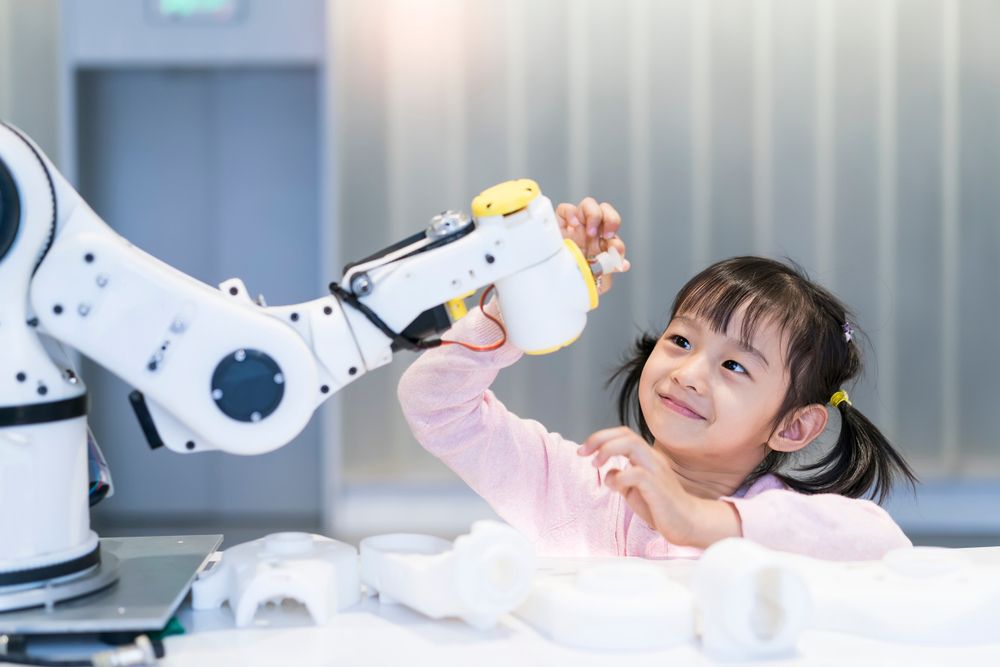What does automation have to do with early childhood?
Published on Tuesday, 10 March 2020
Last updated on Monday, 09 March 2020

AI, robots, automated decision-making - No, you haven’t mistakenly wandered onto a banking website or a factory operation manual. These aren’t concepts you’ll only run into in technical industries and sci-fi conventions (or the YA section of the library). They’re being used in early childhood services around the world, and there may come a day when Australian providers follow suit.
VEVO, for example, is a robot developed to help address the shortage of early childhood educators in Japan. It’s about 70cm tall and humanoid in form, with a face reminiscent of a toy panda or a teddy bear. (You can see it in action in this BBC video).
VEVO recognises individual faces, talks to children, monitors them while they sleep and reports back to parents at the end of the day about things like what their children ate and how long they slept.
It also takes care of administrative tasks (like recording when kids arrive and leave, to determine patterns and assist with rostering).
The Japanese Government acknowledges the shift in thinking required to incorporate AI (artificial intelligence) and IoT (internet of things) into early childhood settings, describing it as “societal change” and emphasising that it “enables teachers to focus on more important tasks, know more about their children, enrich children’s experiences and improve the quality of education.”
“Whatever tasks machines can take on, they should cover. The aim is to increase the time nursery teachers spend with the children ‘as people,’” Joe Sadamatsu told Japan Forward last year. Mr Sadamatsu is the CEO of Global Bridge Holdings which, in collaboration with Gunma University, developed VEVO as part of a broader Child Care System.
The company says their system takes five minutes to do work that previously took two hours. Unsurprisingly for a tech organisation, it also thinks that in the future, good early childhood educators will be those who can analyse data to improve care, and believes the system’s ability to collect, retain and utilise that data will, in some ways, compensate for lack of experience on the part of human workers.
So what are the considerations in an early childhood education and care setting?
It would be great if early childhood educators could be freed from tasks like tallying attendance and spend the time interacting with children. But is that what will happen, or will it simply mean staff cuts?
“With better technology, it becomes easier to say we're going to go from this preschool where there are five humans working all the time to this other one where there's one skilled overseer and AI or robots do most of the work,” Economist economics correspondent Ryan Avent told Vox.
“If you can come up with a different model that relies much less on humans and instead relies on technology that can be sold all over the world, and can therefore be pretty cheap per unit, that's a big savings.”
Clearly, the ability to monitor children’s health statistics is beneficial. Across China, pre-schoolers are scanned by a Walklake robot as they arrive for the day, which takes just three seconds to identify the presence of contagious illnesses like conjunctivitis and hand, foot and mouth disease. There’s no guesswork involved in whether a child is sick or not and early identification results in better outcomes for families and centres.
Similarly, data collected, stored and analysed by machines can inform service planning to better cater to specific cohorts, as well as pick up issues for individuals. (Who’s playing with what? Are there behavioural patterns that are hard to spot across different staff rosters? Were the Taco Tuesdays a fizzer?)
But what else could be done with that information? Is it definitely secure? Can it be sold on? Or used for commercial purposes? What are the privacy implications?
Whether it’s held by a private company or a government entity, parents may be wary of how data will follow their child throughout their life. Perhaps it will never matter that Moana hated carrots, but what about Toby’s behavioural issues? What if that can be somehow used against him in the future?
And what are the legal implications for centres if the technology gets it wrong? Is it even legal to use AI to make specific decisions? There is a real risk that technology developments will outpace legal change making these questions difficult to answer.
Children currently going through the early childhood system are part of this new era. The divide between their technological reality and the one in which many educators grew up in is already glaringly obvious.
Nevertheless, it is the current generation of early childhood providers who must grapple with these questions in order to ensure that those children benefit. The alternative - ignoring it or taking it on board without scrutiny - could have implications we may not be around to see, but that those children will have to live with.
Related Articles
There are currently no related articles.
